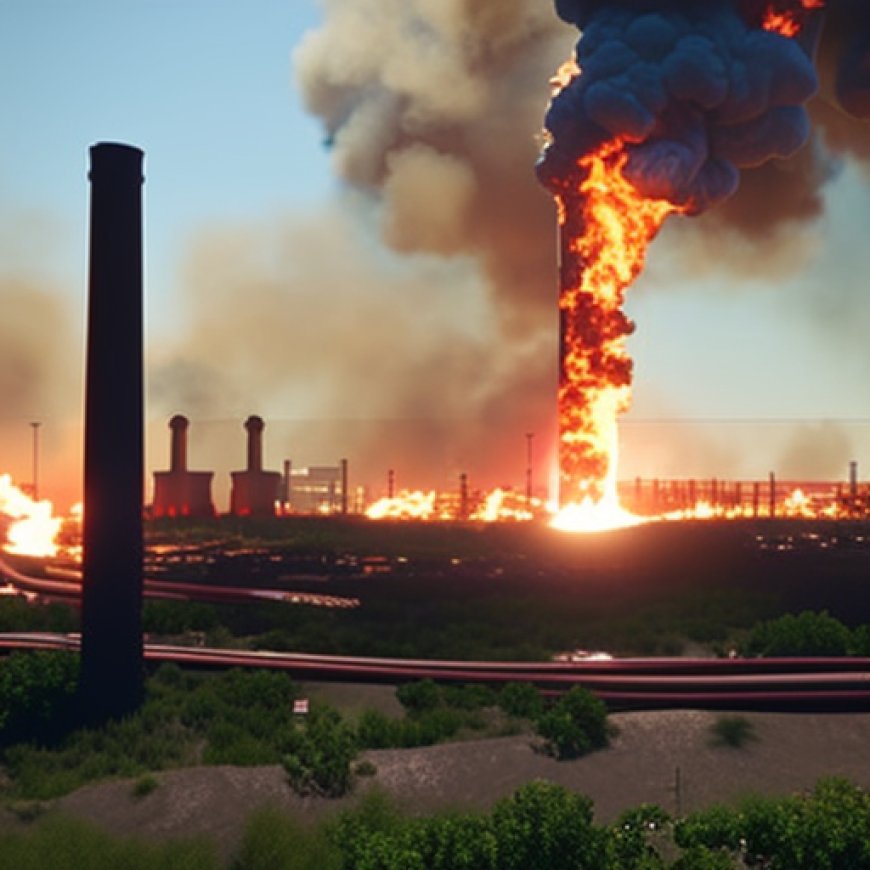La Porte pipeline fire could possibly cause pollution, despite officials saying otherwise | Houston Public Media


La Porte Pipeline Fire Raises Air Quality Concerns

Introduction
The liquid natural gas pipeline fire in La Porte near Deer Park has been continuously burning for over 24 hours. While some officials claim there is no air quality risk, experts warn of potential air pollution. This article examines the concerns surrounding the fire and its implications for air quality.
Concerns for Air Quality
“The bottom line is this, anytime chemicals are flowing into the air, there is a concern for air quality,” stated Jennifer Hadayia, the executive director of Air Alliance Houston. She emphasized that liquid methane gas, which is flowing from the breached pipeline, is a potent greenhouse gas and can cause smoke pollution when burned. The release of methane and the resulting smoke pollution raise concerns about air quality and its impact on public health.
Timeline and Impact
The pipeline fire ignited on Monday morning after a vehicle struck the above-ground pipeline valve. Despite efforts to isolate the line, the fire has continued to burn off the remaining liquid gas for more than 24 hours. Four people, including one firefighter, have been injured, and nearby homes have suffered damage. The prolonged burning of the pipeline has raised concerns about the release of pollutants and its potential impact on the environment and local communities.
Smoke Pollution and Health Risks
Smoke pollution resulting from the fire can lead to the release of particulate matter, a significant air pollutant with adverse effects on public health. Hadayia highlighted the potential for increased soot pollution and the ongoing concern of ozone pollution due to the intense heat of the fire. The full extent of the air pollution from the incident will only be known after 24 hours.
Monitoring and Recommendations
State and local agencies are actively monitoring the fire’s air pollution. Portable air monitoring devices are being used to measure air quality at ground level, with a focus on particulate matter levels. The general public can access the air quality index on airnow.gov to stay informed about the air quality in the area. While there are currently no immediate health concerns, individuals experiencing negative lingering effects are advised to seek medical attention. It is also recommended that those in the vicinity of the fire take personal protective measures, such as wearing KN95 masks, to reduce exposure to pollution and ozone.
SDGs, Targets, and Indicators Analysis
1. Which SDGs are addressed or connected to the issues highlighted in the article?
- SDG 3: Good Health and Well-being
- SDG 11: Sustainable Cities and Communities
- SDG 13: Climate Action
- SDG 15: Life on Land
The issues highlighted in the article are related to air pollution, public health, and environmental impact, which align with these SDGs.
2. What specific targets under those SDGs can be identified based on the article’s content?
- SDG 3.9: By 2030, substantially reduce the number of deaths and illnesses from hazardous chemicals and air, water, and soil pollution and contamination.
- SDG 11.6: By 2030, reduce the adverse per capita environmental impact of cities, including by paying special attention to air quality and municipal and other waste management.
- SDG 13.2: Integrate climate change measures into national policies, strategies, and planning.
- SDG 15.1: By 2020, ensure the conservation, restoration, and sustainable use of terrestrial and inland freshwater ecosystems and their services, in particular forests, wetlands, mountains, and drylands, in line with obligations under international agreements.
3. Are there any indicators mentioned or implied in the article that can be used to measure progress towards the identified targets?
- Particulate matter levels in the air
- Air quality index
- Number of deaths and illnesses related to air pollution
- Reduction in adverse per capita environmental impact of cities
The article mentions monitoring particulate matter levels and using the air quality index to measure air pollution. The number of deaths and illnesses related to air pollution can be used to measure progress towards SDG 3.9. The reduction in adverse per capita environmental impact of cities can be measured through various indicators, including air quality measurements and waste management practices.
Table: SDGs, Targets, and Indicators
| SDGs | Targets | Indicators |
|---|---|---|
| SDG 3: Good Health and Well-being | 3.9: By 2030, substantially reduce the number of deaths and illnesses from hazardous chemicals and air, water, and soil pollution and contamination. | – Number of deaths and illnesses related to air pollution |
| SDG 11: Sustainable Cities and Communities | 11.6: By 2030, reduce the adverse per capita environmental impact of cities, including by paying special attention to air quality and municipal and other waste management. | – Reduction in adverse per capita environmental impact of cities – Air quality measurements – Waste management practices |
| SDG 13: Climate Action | 13.2: Integrate climate change measures into national policies, strategies, and planning. | – N/A |
| SDG 15: Life on Land | 15.1: By 2020, ensure the conservation, restoration, and sustainable use of terrestrial and inland freshwater ecosystems and their services, in particular forests, wetlands, mountains, and drylands, in line with obligations under international agreements. | – N/A |
Source: houstonpublicmedia.org








